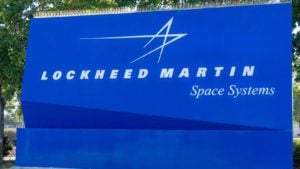SpaceX has been leading the pack. The company has nearly 5,000 satellites in orbit, with hundreds launched each month and plans to launch thousands more. In fact, it aims to launch around 42,000 satellites — a megaconstellation.
Amazon’s Kuiper and the E.U.’s IRIS2/Galileo into the satellite internet arena are poised to reshape the industry, fueling demand for space stocks for 2024 and beyond. Amazon plans to spend $10B on Kuiper, while the E.U. seeks final bidders for its $6.55B contract for IRIS2.
If Amazon and the E.U. pursue a similar scale to SpaceX, the demand for space launches will likely increase dramatically. That could result in a potential rise in several other space stocks.
Amazon and the E.U. Play Catch-Up
Despite Amazon relying on SpaceX for some of its launches, diversification is a natural progression to reduce dependence on direct competitors. Similarly, the E.U. is exploring opportunities to expand its launching capacities and catch up with the United States’ dominance in global internet provision. The E.U.’s initiative would begin primarily through SpaceX and Amazon, eventually benefiting other space stocks.
With the race to provide internet from satellites heating up, the market for space stocks could start gaining momentum. Estimates suggest that building out Starlink and its competitors’ constellations may require as many as 5,000 space launches in the coming years.
The potential of providing global internet connectivity through satellites is immense. Some research projects a $19.4 billion market and a remarkable 23% compound annual growth rate (CAGR) until 2030.
The scale of the challenge presents significant opportunities for certain space stocks. As companies prepare to battle, investors may watch those space stocks with the most potential to benefit from growing opportunities.
So far, Amazon has ordered nearly 100 launches. The largest recipient of the orders is United Launch Alliance (ULA), a joint venture between Lockheed Martin (NYSE:LMT) and Boeing (NYSE:BA). Apart from the obvious Amazon and ULA players, Northrop Grumman (NYSE:NOC) makes the list of the top three space stocks to watch. It is the second largest private company to provide space lift capabilities.
Amazon (AMZN)
Amazon plans to invest up to $10 billion in its satellite constellation project to provide global broadband and autonomous vehicle connectivity. Morgan Stanley (NYSE:MS) has identified it as a potential “$100 billion opportunity.” The company has started signing deals, like the recent collaboration with NTT Communications in Japan.
Amazon is one of the Magnificent Seven and trades at a price-to-earnings (P/E) ratio of 81 but doesn’t pay dividends. With its strong financial performance and strategic partnerships, it is poised to compete with Starlink and establish itself as a significant player in the broadband and connectivity market.
Lockheed Martin (LMT)

Lockheed Martin is a co-owner of ULA, the world’s third-largest private launch company. Boeing is the other co-owner, but its aerospace division still faces challenges from the coronavirus pandemic.
ULA is receiving the majority of orders to supply Amazon’s Kuiper constellation. Back in October, it launched Amazon’s first satellite, which Lockheed stands to benefit from. In its annual report, Lockheed Martin said its share of profits from ULA was $114 million — before Amazon’s involvement.
Recently, LMT received a boost from its role as a supplier of the Aegis system, used for missile and drone defense. The company remains an exciting investment opportunity with a reasonable P/E ratio of 16x and a dividend yield of 2.8%.
Northrop Grumman (NOC)

Known primarily as a defense contractor, Northrop Grumman has made significant strides in the space industry. Its Space Systems division has emerged as a strong competitor to SpaceX, delivering the fourth largest upmass to space globally during the third quarter. With its space division accounting for 36% of its revenue and experiencing 11% year-over-year growth, Northrop Grumman is positioning itself for continued success.
Moreover, the firm has recently raised its 2023 sales guidance. At a P/E ratio of 15x, it could achieve even stronger performance in the coming year, showcasing its optimism and positive outlook for future growth.
On the date of publication, Stavros Tousios did not hold (either directly or indirectly) any positions in the securities mentioned in this article. The opinions expressed in this article are those of the writer, subject to the InvestorPlace.com Publishing Guidelines.
Stavros Tousios, MBA, is the founder and chief analyst at Markets Untold. With expertise in FX, macros, equity analysis, and investment advisory, Stavros delivers investors strategic guidance and valuable insights.

